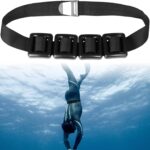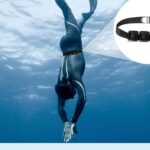How Much Weight Should I Use For Snorkeling
How much weight should I use for snorkeling? Great question and it’s a lot better than the one I overheard a tourist ask: “Can I just hold a dumbbell while I snorkel?”
Whether you’re a beginner, a curious freediver, or someone tired of floating like a marshmallow in a wetsuit, the mystery of snorkeling weights can be a sink-or-swim situation. So, let’s break it down in a way that makes sense, keeps you safe, and keeps your snorkeling trip from turning into a human anchor experiment.
How Much Weight Should I Use for Snorkeling?
Let’s cut straight to the chase: most casual snorkelers don’t need weights at all. But if you’re wearing a thick wetsuit, doing deep duck dives, or trying to stay down longer for photography or spearfishing, you might need between 2–10% of your body weight in added weight.
| Body Type | Wetsuit Thickness | Suggested Weight |
| Lean / athletic | No wetsuit | 0–2 lbs |
| Average adult | 3mm wetsuit | 3–6 lbs |
| Larger body type | 5mm wetsuit | 6–10 lbs |
| Children | No wetsuit | 0 lbs (safety-first) |
But don’t just slap on 8 pounds because a chart told you so. The real answer lies in testing your buoyancy and knowing your own body + gear combo. Let’s go deeper.
Do You Even Need Weight for Snorkeling?
Most people googling “how much weight should I use for snorkeling” are doing surface-level snorkeling – floating, swimming with fish, and occasionally diving a few feet. For that, you don’t need any weight at all.
But some scenarios do call for it:
- You’re wearing a thick wetsuit that keeps pushing you to the surface
- You’re doing skin diving or shallow freediving
- You’re into underwater photography, spearfishing, or simply staying underwater longer
- You’ve tried snorkeling without weights and struggled to stay down
In these cases, weights help you achieve neutral buoyancy, meaning you’re not constantly bobbing up or sinking uncontrollably. It’s the sweet spot between floating like a balloon and sinking like a cannonball.
Factors That Affect How Much Weight You Need
The frustrating thing about finding the right weight is that it’s different for everyone. Here’s why:
1. Body Composition
Muscle sinks, fat floats. That’s the science. If you’re lean or muscular, you may need less weight or none. If you’re more buoyant (ahem, thanks winter), you’ll need more.
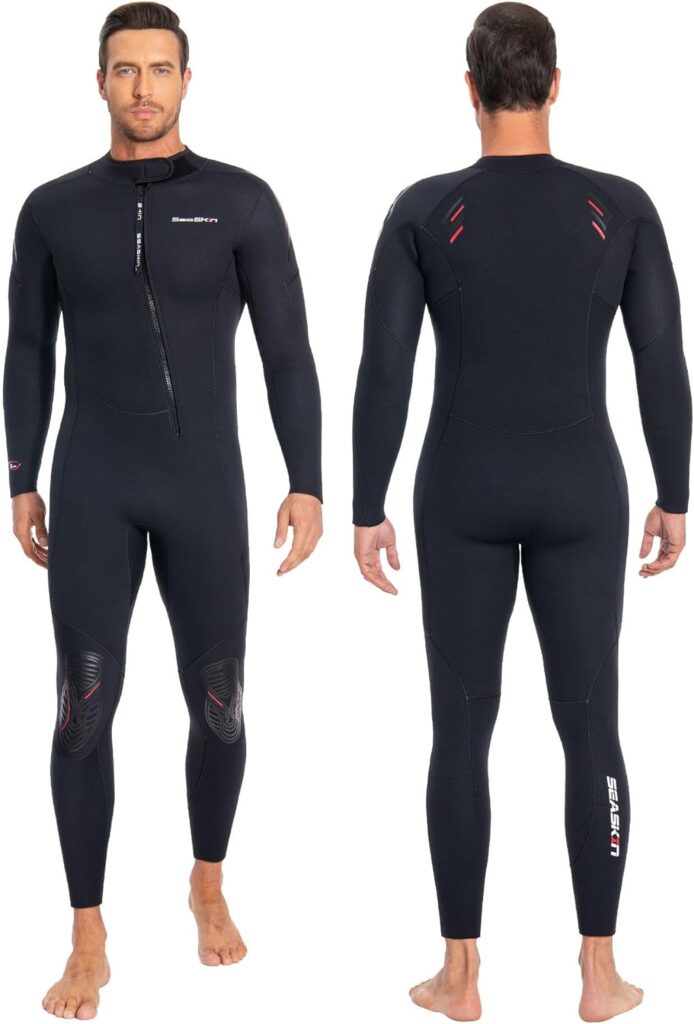
2. Wetsuit Thickness
- No wetsuit: You’re more naturally balanced in warm tropical waters
- 3mm wetsuit: Add 3–6 lbs
- 5mm or thicker: Add 6–10 lbs
Neoprene adds buoyancy, more suit, more float, and more weight needed.
3. Saltwater vs Freshwater
Saltwater is more buoyant. You’ll need more weight in the ocean compared to freshwater lakes.
4. Snorkeling Activity
- Surface snorkelers = little to no weight
- Freedivers and spearfishers = more weight, but balanced for dynamic depth
5. Snorkeling Gear
A good snorkeling mask that fits well makes breathing easier and you’ll need every bit of comfort when adding weights. Look for masks with a wide field of vision and low volume if you plan to duck dive.
Why Using Too Much Weight is Dangerous
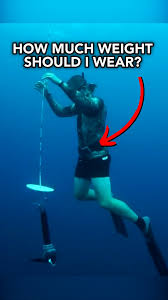
If you’re thinking, “I’ll just slap on 10 pounds to be sure!” – please don’t. Here’s what can go wrong:
- You’ll sink faster than you can react
- You’ll tire easily fighting gravity on the way up
- You risk panic or blackout if diving deep
- Emergency situations become harder to manage
Even if you’re wondering about scuba how much weight divers use, remember: scuba includes a BCD (buoyancy control device). Snorkelers don’t have that safety buffer.
So, always use the least amount of weight needed for neutral buoyancy.
How Much Weight Should I Use for Snorkeling in KG?
If you’re asking how much weight should I use for snorkeling in kg, you’re not alone, many international snorkelers want precise guidance without doing mental math mid-ocean.
Here’s the general guideline, converted to kilograms:
General Rule (for wetsuit users or duck diving):
Use 5–10% of your body weight in added weight.
| Body Weight (kg) | Suggested Weight Range (kg) |
| 50 kg | 2.5–5 kg |
| 60 kg | 3–6 kg |
| 70 kg | 3.5–7 kg |
| 80 kg | 4–8 kg |
| 90 kg | 4.5–9 kg |
But hold on, this is just a rough estimate.
You must still do a buoyancy test (relax vertically in water, fully inhale, and see if your eyes float at surface level). Adjust weight accordingly.
Tips:
- In warm waters without a wetsuit: 0–2 kg may be enough (or no weight at all).
- With a 3mm wetsuit: start with 3–5 kg and test.
- For freediving/snorkeling photography: you may need closer to 6–8 kg depending on wetsuit thickness.
Important: Always use a quick-release freediving weight belt, never overestimate, and test your gear before snorkeling in deep or remote areas.
Snorkeling Must-Haves (Gear Checklist for a Safe & Fun Trip)
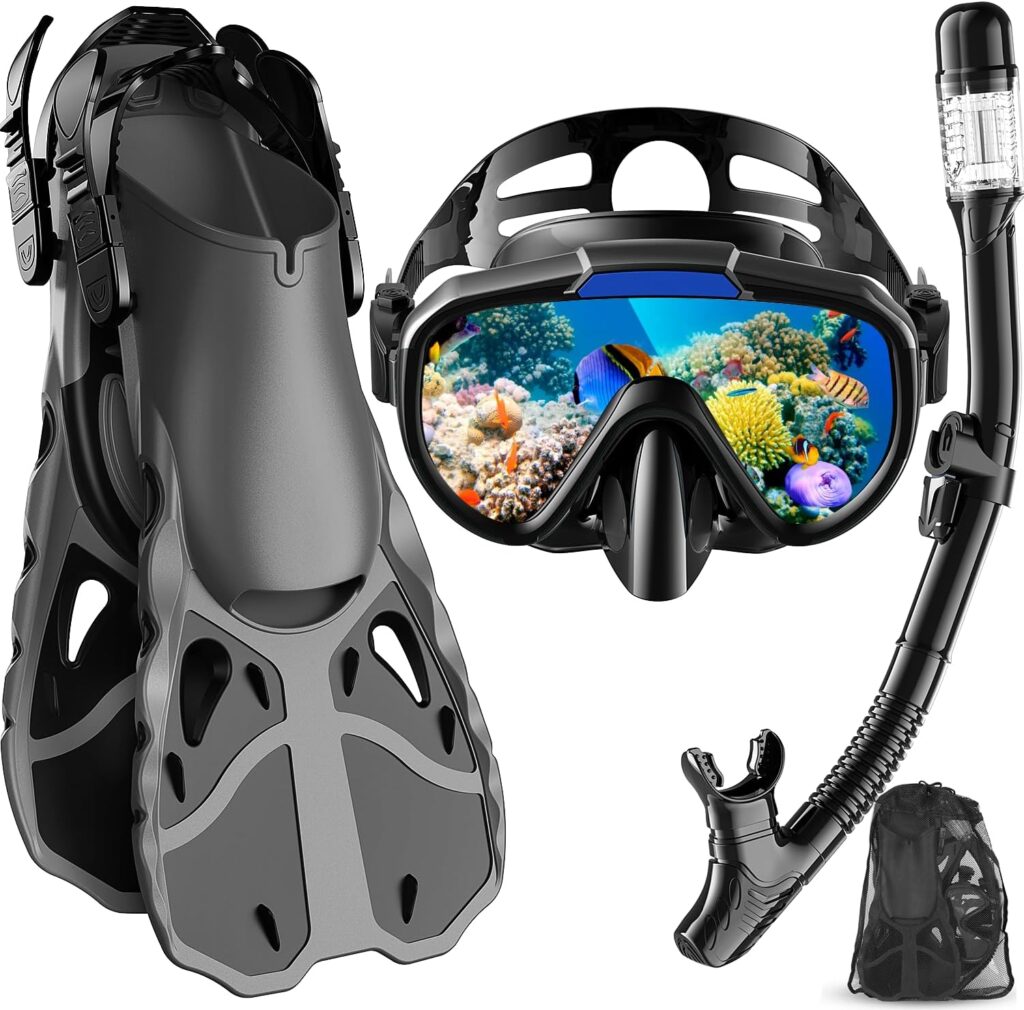
Here’s a list of snorkeling must-haves to make your adventure safe, comfortable, and unforgettable:
Essential Snorkeling Gear:
1. Snorkeling Mask
Choose a low-volume, anti-fog model with a silicone skirt for a leak-free seal.
2. Snorkel
A dry-top snorkel prevents water from entering when diving under.
3. Fins
Short fins for beginners, long freediving fins for advanced snorkeling.
4. Wetsuit or Rash Guard
For warmth, sun protection, and slight buoyancy.
5. Flotation Device
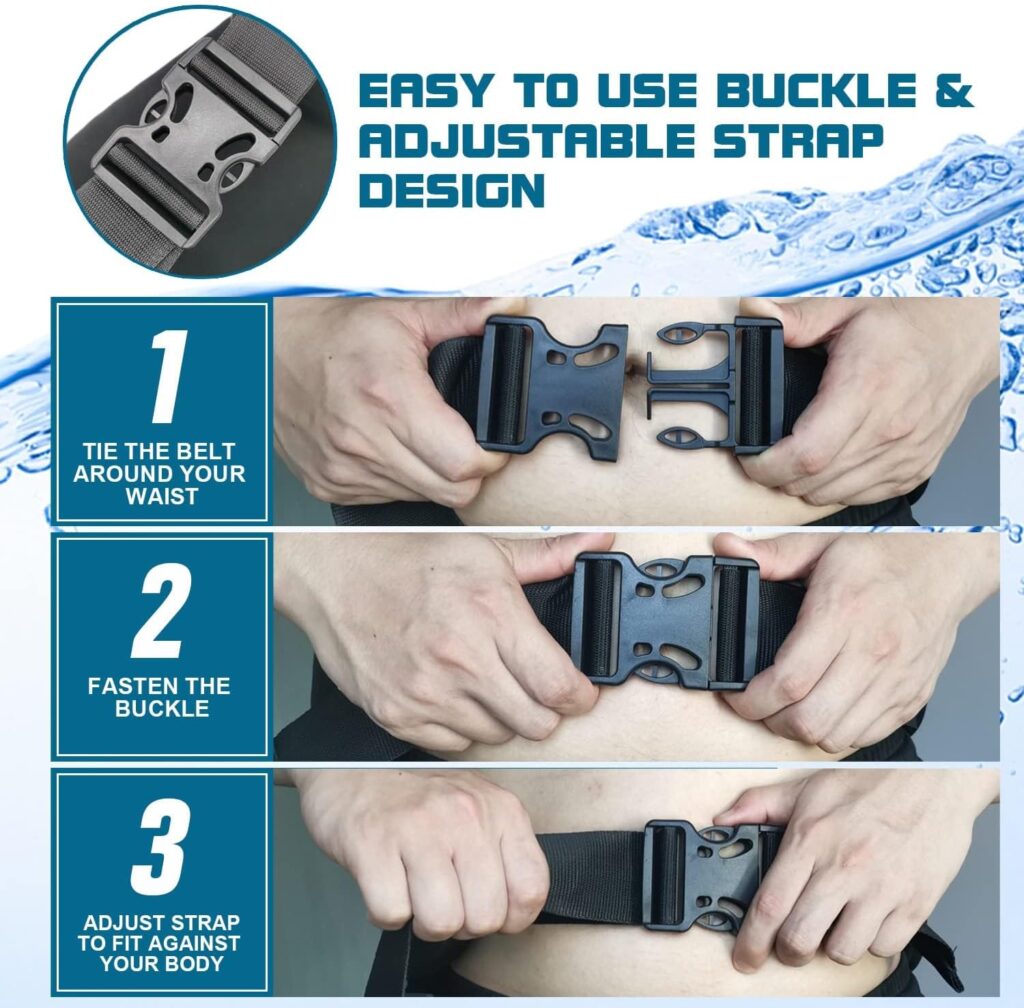
Vest or belt (great for beginners or long sessions).
6. Reef-Safe Sunscreen
Prevent sunburn without harming marine life.
7. Waterproof Bag
For storing valuables, towels, or dry clothes.
8. Defog Spray (or baby shampoo)
Keeps your mask from fogging up.
9. Underwater Camera or GoPro (optional)
For snapping memories of your fishy friends.
10. Weight Belt (optional)
Only if you’re doing duck diving or snorkeling with a wetsuit.
Bonus Tip: Always check for local snorkeling regulations and don’t touch marine life, your fingers are not Nemo-safe!
Check This : Do You Need to Know Swimming for Snorkeling
Best Flotation Belt for Snorkeling
Flotation belts are fantastic for beginners, older snorkelers, and anyone who wants to snorkel with less effort or stay above water longer. They help conserve energy and give peace of mind.
Here are some top-rated types and what to look for:
Top Features to Look For:
- Adjustable straps for snug fit
- Lightweight foam that’s saltwater-resistant
- Quick-dry material
- Enough lift to support your body comfortably
Best Flotation Belts for Snorkeling
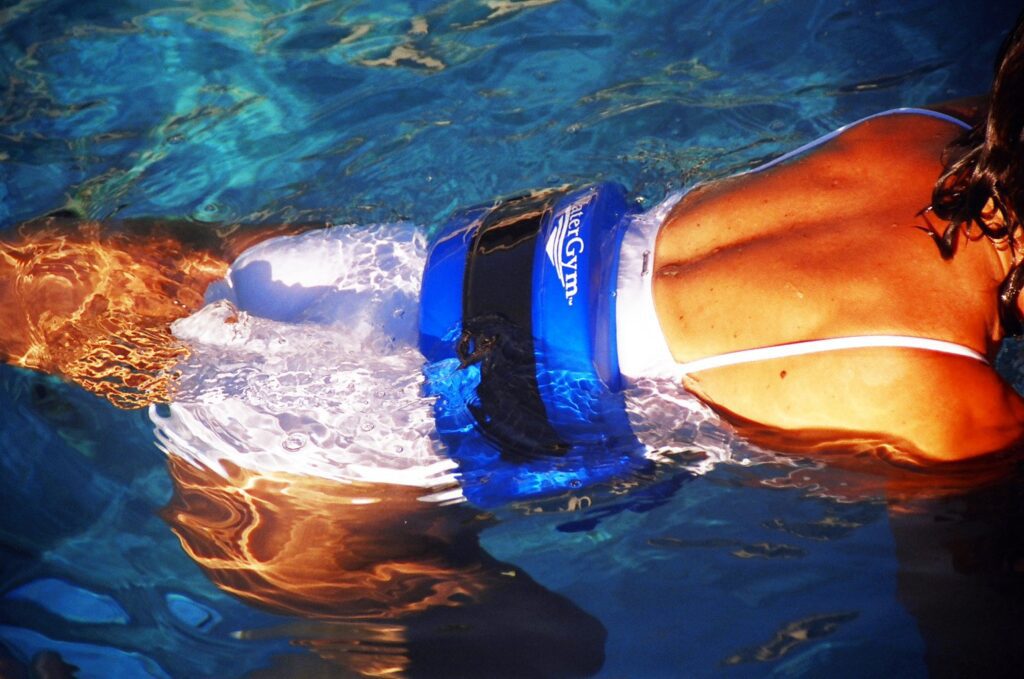
1. Aqua LEISURE New Aqua Water Fitness Deluxe Flotation Belt
Features: High-density EVA foam blocks, adjustable straps, great for snorkel training
Pros: Comfortable, floaty, budget-friendly
Cons: Not ideal for deep diving
2. Fstcrt Flotation Belt
Features: Slim, low-profile design, used for water aerobics but perfect for surface snorkeling
Pros: Comfortable for long sessions
Cons: Minimalist flotation
3. TYR Aquatic Floatation Belt
Features: Ergonomic design, segmented foam for better movement
Pros: Great for snorkelers with back issues
Cons: Slightly bulky for packing
4. Scuba Choice Snorkeling Floating Belt
Features: Designed specifically for snorkeling, with optional pockets for weight if needed
Pros: Dual-purpose: flotation and minor weighting
Cons: Less comfortable for thin users
💡 Pro Tip: Flotation belts are not life vests, they’re designed to help you float comfortably, not save you in emergencies. For non-swimmers or anxious beginners, pair it with a snorkel vest.
Safety First: Smart Weight Practices
- Test in a pool or shallow beach water first
- Never snorkel alone when using weights
- Use a quick-release weight belt (freediving style)
- Practice emergency releases in case you panic
- Keep weights low and centralized (not on ankles)
Safety isn’t optional, it’s essential.
How to Know What Diving Weight You Need
You don’t need a physics degree – just a little testing.
The Float Test:
- Put on your full snorkeling gear (mask, fins, wetsuit).
- In calm, shallow water, inhale fully and float vertically.
- You should float at eye level when relaxed and slowly sink when you exhale.
If you float like a cork even after exhaling, you need more weight. If you sink like a bowling ball with a sniff of air, you’ve overdone it.
INTERESTING READ: Can you snorkel with glasses?
How to Use a Freediving Weight Belt for Snorkeling
A freediving weight belt is ideal for snorkeling and skin diving. Why?
- It’s stretchy, so it stays snug at depth
- It’s streamlined—not bulky like scuba belts
- It allows quick release in emergencies (this is vital)
Avoid strapping weights to your ankles unless you’re training like Aquaman. Stick to the belt.
Tip: Add weights gradually. Start with 2 lbs and test. Add in 1–2 lb increments until you find your balance.
Example Setups (Scuba Diving Weight Calculator Style)
| Weight | Body Type | Wetsuit | Use Case |
| 0 lbs | Average adult | No suit | Surface snorkeling |
| 2–3 lbs | Lean adult | 3mm | Short duck dives |
| 4–6 lbs | Avg adult | 3mm or 5mm | Longer dives, underwater photos |
| 7–10 lbs | Larger body | 5mm | Spearfishing/snorkel photography |
This is similar to what you’d see in a scuba diving weight calculator, but adjusted for the less intense needs of snorkeling.
Snorkeling vs Scuba: What’s the Weight Difference?
You might be tempted to plug your stats into a scuba diving weight calculator, but don’t copy scuba divers blindly.
Scuba divers carry:
- A BCD to inflate/deflate buoyancy
- A tank (which adds weight)
- More gear
So, when they ask how much weight diving requires, their answers don’t apply to snorkelers. You’re using less gear and more lung control, not tank breathing.
Advanced Tip: Buoyancy Changes at Depth
For skin diving or shallow freediving snorkelers: the deeper you go, the more negatively buoyant you become. Why?
Because your wetsuit compresses, and you lose volume and float.
So, adding too much weight up top makes it even riskier down deep.
Use less weight than you think. Your lung volume and wetsuit compression already affect buoyancy underwater. Don’t add danger with extra pounds.
Frequently Asked Questions
Q: Can I use scuba weights for snorkeling?
A: Yes, but avoid bulky belts. Opt for a freediving weight belt with quick-release features for comfort and safety.
Q: Should I try ankle weights?
A: Generally no. They mess with swim dynamics and are dangerous in emergencies.
Q: Is snorkeling with weights legal everywhere?
A: In most places, yes, but check local regulations, especially in protected marine parks.
Q: Can kids use weights for snorkeling?
A: No. Children should always snorkel weight-free and under supervision.
The Bottom Line on How Much Weight Should I Use for Snorkeling
So, how much weight should I use for snorkeling? The answer is: just enough to comfortably stay down and never enough to risk your safety. Start small. Test in safe water. Invest in a good freediving weight belt and quality snorkeling gear.
And remember: you’re here to float, not flounder.
